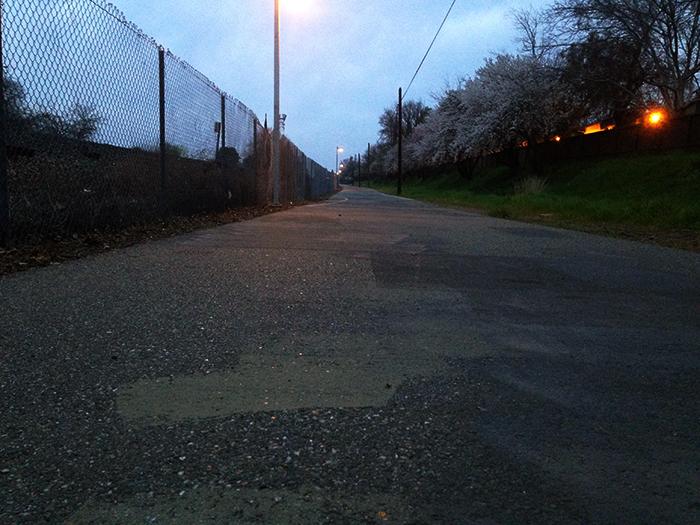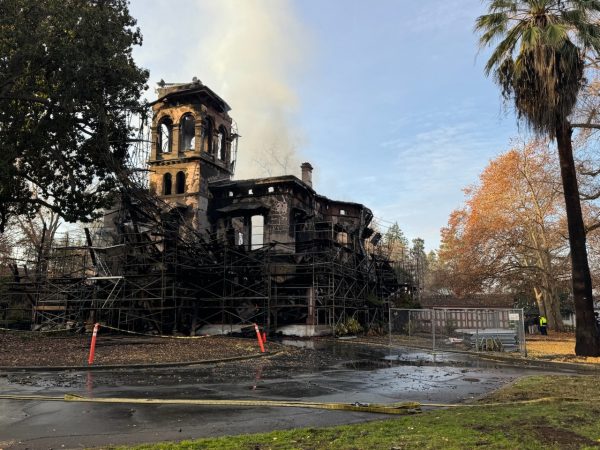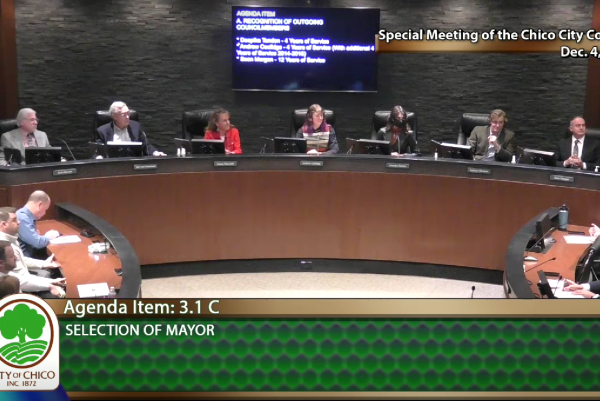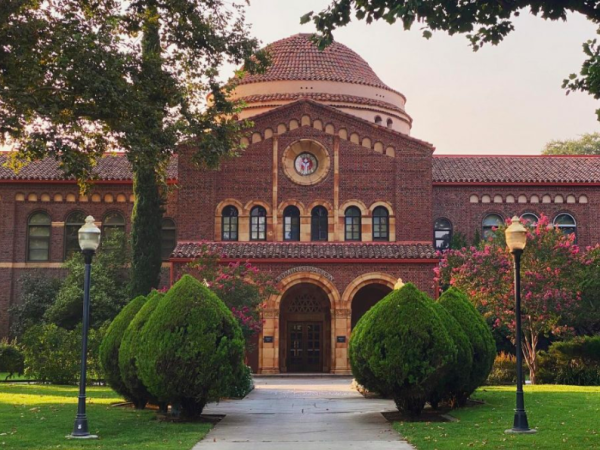Long road to safety on bike path
City Council voted unanimously to install cameras on the bike path but there is very little funding available. Photo credit: George Johnston
The city of Chico and Chico State have joined forces to tackle the crime problem on the bike path that runs between the railroad tracks and campus. Although they have formed a united front, there are a number of financial, logistical and even cultural obstacles to overcome.
On Feb. 16, Chico City Council unanimously passed the motion to install a surveillance system along the trail. Cameras and signs will indicate that the area is under surveillance. This increased security measure will allow police and dispatchers to keep tabs on the trail at all times, decreasing response time, and in some cases allowing Chico Police to respond to crimes they otherwise wouldn’t have known about. However, due to the expensive prospect of storing all the footage, the cameras may not be recording.
“I don’t believe it will be recording, it’ll just be on somebody’s little screen and they’ll be watching it,” said Deanna Jarquin, president of Associated Students and senior women’s studies major. “When you record something, it becomes public record, and you have to keep it for seven to 10 years under federal government law.”
Despite this potential shortcoming, there is a great deal of optimism about the prospect of having the bike trail under surveillance.
“This is a project that should have happened years ago,” Jarquin said. “Now it’s coming to fruition because of a newly collaborative feel between our university and our community that we need to protect that area.”
The bike path is a problem that begs for a solution, and the consensus is that the surveillance system is a step in the right direction. One concern is the cost. The surveillance system is going to cost $19,000 to install and $500 per year for upkeep. Despite the approval of the system, the money has not yet been found.
“There was a unanimous vote to implement it, which almost never happens,” said Sean Morgan, vice mayor of Chico. “There were disagreements about who should pay for it.”

The problem is zoning, and at a time when both the city of Chico and Chico State are operating on tight budgets, no one has the funds for a project that is not entirely their responsibility.
“The bike trail is one of the strangest places in Chico, because it’s under two jurisdictions,” Jarquin said. “If you’re walking along, 10 feet over you’re on university property and 10 feet later you’re on city property, and then 10 feet later you’re back on university property.”
The solution to the funding problem was to raise money publicly.
“It’s an expense that fell right in the middle of the city fiscal year, so they wanted to move forward with the project and wanted it to be publicly funded,” said Katie Simmons, president and CEO of the Chico Chamber of Commerce.

The North Valley Community Foundation has decided to take on this initiative because the city was unable to stretch the budget. They are accepting donations through their web page and may hold fundraising events in the future. The successful installation of the surveillance system will depend on the participation of Chico community members.
For years the bike trail has been notorious for the violent crimes that tend to occur late at night when students are walking home. This reputation has earned it the colloquial nickname, the “rape trail.”
“My dad knows that that’s what the area is called,” said Jarquin. “My dad did not go to Chico State.”
For some, making the trail safe again is not only about action, but about the language used to describe the trail as well. The nickname “rape trail” alienates students, reinforcing the hostile nature of the area and allowing part of the campus to be labeled a danger zone.
Continuing to call the bike path by its nickname is insensitive, and in a sense, is a verbal acceptance that sexual assault is a fixed part of the cultural landscape.
“On one hand, it’s important for students to be aware of areas that may be less safe than others,” said Alex Brown, Safe Place administrator. “On the other hand, everyone has the right to feel safe on their campus and in their community, and that’s the message that should be most important. Using terms like ‘rape trail’ can be jarring for survivors and survivor-supporters, and the safety and experiences of survivors should be central to these conversations.”
Upon closer inspection, “rape trail” is somewhat of a misnomer. It implies that sexual assault is the main crime that occurs on the trail and reinforces the myth that only strangers hiding in the bushes perpetrate sexual assault.
“The trail is most associated with sexual assault, but in reality, only 20 percent of sexual assault happens from someone you don’t know,” Jarquin said. “But we’re also talking about drug deals, fights, just plain fights, gang activity… there’s much less likelihood of a woman being pulled into a bush, as opposed to a drug deal.”

Making the bike trail safe will take a variety of solutions working in unison. The success of this project depends on community members rallying to the cause and giving their support vocally and monetarily. Meanwhile, a conscious transformation of thought surrounding the bike path and its role in the community will be necessary. However, it will still take time before the problem is solved.
“Is it going to solve the problem? No. Should you feel safer? No. But the idea is that it does keep intruders at bay. I just don’t want people to have a false sense of security,” Morgan said.
Students should remain vigilant and avoid making themselves vulnerable on the bike path. The surveillance system will not become a reality for some time, and even then it will not make the area completely safe, but Chico City Council members agree: it is an important step on the path to a safer bike trail.
Eric Couderc McGuire can be reached at [email protected] or @ericcoudercmcg on Twitter








